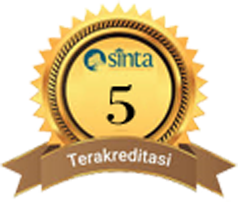The Implementation of Wordwall Media to Improve Students’ Learning Outcomes in Islamic Religious Education (PAI) for Fifth-Grade Students at SDN Lambada Klieng, Aceh Besar
DOI:
https://doi.org/10.22373/fitrah.v7i1.8230Keywords:
Wordwall, Two Stay Two Stray, Islamic Religious Education, Learning Outcomes, Classroom Action ResearchAbstract
This classroom action research aimed to improve students’ learning outcomes and engagement in Islamic Religious Education (PAI) through the integration of Wordwall-based digital media and the Two Stay Two Stray (TSTS) cooperative learning model. Conducted at SD Negeri Lambada Klieng, Aceh Besar, during the 2024/2025 academic year, the study involved 25 fifth-grade students and followed the Kemmis and McTaggart (1998) spiral model consisting of two cycles with stages of planning, action, observation, and reflection. Data were collected through observation, tests, and documentation, then analyzed using descriptive quantitative and qualitative methods. The findings showed a significant improvement in students’ performance and participation, as indicated by the increase in average scores from 68.4 in Cycle I to 91.2 in Cycle II and in classical mastery from 44% to 96.7%. Students also displayed greater motivation, collaboration, and confidence in expressing ideas. The integration of Wordwall and TSTS created an engaging, interactive, and reflective learning atmosphere that enhanced both cognitive achievement and affective development. This study concludes that combining Wordwall with TSTS effectively supports meaningful and student-centered learning in Islamic Religious Education, aligning with social constructivist principles, and is recommended as an innovative pedagogical strategy to enhance learning effectiveness in elementary schools.
References
Abdillah, M. I., Hunaida, W. L., & Muqit, A. (2025). Digitalization of Islamic Education Learning through Interactive Educational Games. Edudeena : Journal of Islamic Religious Education, 9(1), 67–76. https://doi.org/10.30762/edudeena.v9i1.4230
Anderson, L. W., & Krathwohl, D. R. (2001). A Taxonomy for Learning, Teaching, and Assessing: A Revision of Bloom’s Taxonomy of Educational Objectives. Longman.
Andini, A. (2022). Pengaruh Penggunaan Media Pembelajaran Wordwall Terhadap Hasil Belajar Siswa Pada Materi Sistem Periodik Unsur. Jakarta: FITK UIN Syarif Hidayatullah Jakarta.
Anwar, M. A., & Inayati, N. L. (2025). Gamification Of Islamic Education: Exploring The Role Of Wordwalls In Increasing Student Participation In Learning The Qur’an And Hadith. Fikroh: Jurnal Pemikiran Dan Pendidikan Islam, 18(2), 281–291. https://doi.org/10.37812/fikroh.v18i2.1898
Azzahra, F., Rahmadita, J., & Hazmi, M. Z. (2025). The Effectiveness of Using Wordwall Website in Improving Science Learning Motivation in Elementary School: A Literature Review. International Journal of Education and Learning Assessment, 1(01), 01–12.
Basyiroh, U., Musadad, A. A., Muchtarom, M., & Selamat, A. Z. bin. (2024). Systematic Review: Android-Based Interactive Learning Media to Enhance Understanding of Islamic Education in Support of SDGs. Profetika: Jurnal Studi Islam, 25(02), 533–546. https://doi.org/10.23917/profetika.v25i02.7877
Hamdayama, J. (2022). Metodologi Pengajaran. Jakarta: Bumi Aksara.
Hikma, N. A., Hafidzah, Z. M., & Kowiyah, K. (2024). Efektivitas Penggunaan Media Interaktif Wordwall pada Pembelajaran Matematika Pembagian Bilangan Cacah Kelas 3 di Sekolah Dasar. Jurnal Arjuna : Publikasi Ilmu Pendidikan, Bahasa Dan Matematika, 2(6), 308–314. https://doi.org/10.61132/arjuna.v2i6.1350
Kemmis, S., McTaggart, R., & Nixon, R. (2013). The Action Research Planner: Doing Critical Participatory Action Research. Springer Science & Business Media.
Norman, E., Pahlawati, E., Siregar, M. L., & Damayanthy, D. (2025). Digital Transformation of Islamic Education: AI, Gamification, and Pedagogical Adaptation for Generation Z. Medina-Te : Jurnal Studi Islam, 21(1), 37–49. https://doi.org/10.19109/medinate.v21i1.27952
Pratini, K. C., Riastini, P. N., & Yudiana, K. (2024). Model Pembelajaran Two Stay Two Stray Meningkatkan Rasa Percaya Diri Siswa Kelas V Sekolah Dasar. Journal of Education Action Research, 8(2), 332–339. https://doi.org/10.23887/jear.v8i2.77864
Russhaimah, Z. I., Supriyanto, T., & Murtini, T. (2024). Wordwall Media in Learning Pancasila Education on Learning Outcomes and Learning Motivation for Fifth Grade Elementary School Students. Jurnal Pendidikan Dan Pengajaran, 57(2), 370–382. https://doi.org/10.23887/jpp.v57i2.77551
Sari, N. (2025). Integrasi Media Pembelajaran dalam Pembelajaran PAI Berdasarkan Kurikulum Merdeka. Edukatif, 3(1), 190–196.
Slavin, R. E. (2021). Educational Psychology: Theory and Practice. Pearson.
Sugiarti, D., & Widaty, C. (2024). INTERACTIVE WORDWALL GAME MEDIA IN SCIENCE LEARNING FOR GRADE V ELEMENTARY SCHOOL. Edukasi: Jurnal Pendidikan, 22(2), 270–284. https://doi.org/10.31571/edukasi.v22i2.7352
Vygotsky, L. S., & Cole, M. (1978). Mind in Society: Development of Higher Psychological Processes. Harvard University Press.
Wajdi, M. F., Salsabila, U. H., Prabowo, R., & Restiyanti, A. F. (2021). The Use of Interactive Multimedia on Students’ Islamic Religious Education Learning Motivation. Interdisciplinary Social Studies, 1(3), 267–272. https://doi.org/10.55324/iss.v1i3.44
Downloads
Published
How to Cite
Issue
Section
License
Copyright (c) 2025 Syamsidar Syamsidar, Marzuki Marzuki, Nurbayani Nurbayani, Harmaini Harmaini

This work is licensed under a Creative Commons Attribution-NonCommercial-ShareAlike 4.0 International License.
Authors who publish in this journal agree to the following terms:
- Authors retain copyright and grant the journal right of first publication with the work simultaneously licensed Attribution-NonCommercial-ShareAlike 4.0 International (CC BY-NC-SA 4.0) that allows others to share the work with an acknowledgment of the work's authorship and initial publication in this journal.
- Authors can enter into separate, additional contractual arrangements for the non-exclusive distribution of the journal's published version of the work (e.g., post it to an institutional repository or publish it in a book), with an acknowledgment of its initial publication in this journal.
- Authors are permitted and encouraged to post their work online (e.g., in institutional repositories or on their website) before and during the submission process, as it can lead to productive exchanges and earlier and greater citation of published work. (See The Effect of Open Acces)









